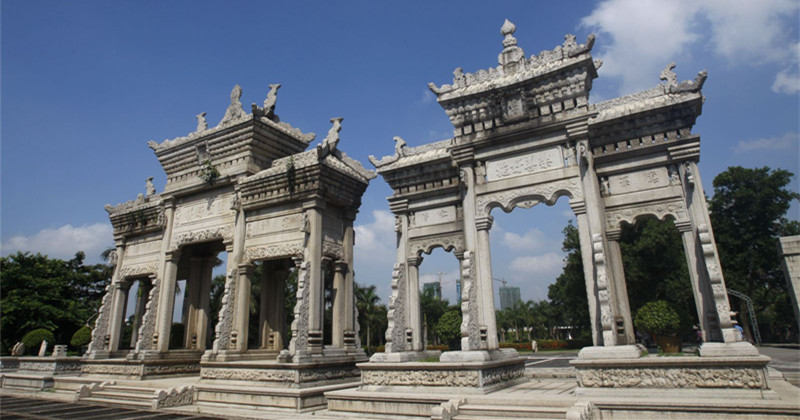Skype: neodalle-travel
Tel: +86 135 7447 2266
E-mail: sales@visitaroundchina.com
Meixi Archways Scenic Area, situated in Meixi Village of Zhuhai City, covers an area of 126,000 square meters (about 31 acres). This scenic area mainly contains three parts: the Meixi Archways, the former residence of Chen Fang and the Chen's Garden and Cemetery.
What to see?
Archways (Paifang) is a kind of traditional architecture unique in China. In Chinese history, an archway is set up to commemorate the people high-minded in virtue. The Meixi Memorial Archways for Chen Fang is typically one of them. Chen Fang, the first Chinese consul general in Honolulu, was born in Meixi Village. In his early age, he went to Honolulu to earn his keep. Owing to his hard work, he soon became the first Chinese millionaire on the island of Oahu. In 1890, he came back to his hometown and settled down. After returning, he did many favors for the village and achieved a good reputation in his hometown. In order to commend Chen Fang, the Emperor Guangxu in Qing Dynasty (1644-1911) obliged artisans to construct four archways for him in 1886 and 1891 respectively. After hundreds years, only three of the them are preserved. Made of granite, the three archways are erected abreast. Each of them is about 12 meters high (about 39 feet) and 12.2 meters wide (about 13.3 yard). With four strong pillars, each archway has a similar roof structure to that of the Hall of Supreme Harmony (Taihedian) in the Forbidden City.

The heads of the archway are carved with 'leshan haoshi' (which means 'ready to help others'), 'zhongcheng' (which means 'loyal') and other inscriptions, and the pillars and roofs have elaborate carvings such as beautiful flowers, luck animals and calligraphies. Different from other traditional archways, the Meixi Archways possesses the particular western-styled decorative design. These three archways are thus the perfect integration of traditional Chinese architecture form and western decoration style.
On the right side of archways lies the former residence of Chen Fang. This residence covers an area of 5742 square meters (about 6867 square yards), including a Chen's memorial temple, two large chambers, a hall, a villa, the Meixi temple and an ancestral temple. The residence is much like a manor with various kinds of plants and trees, brick made fencing and sentry buildings. Today, the residence features series of exhibitions about Chinese traditional arch, waxworks of famous figures in Zhuhai, the history of Chen's Family and Chinese painting and calligraphy, all of which allow people to enjoy Chinese culture and the local custom.
In front of the former residence lies Chen's Garden and Chen's cemetery. With an area of 72,000 square meters (about 17 acres), it has a length of 300 meters (about 328 yards) and a width of 240 meters (about 262 yards). Nowadays in this area, people can still see a stele erected almost one hundred years ago. It is carved with 'shengjingjiacheng' (which means 'a fascinating place'). In the garden, some trees Chen Fang brought in from Hawaii are now more than a hundred years old but still look vigorous. The eight-angled pavilion, rock-paved path and lotus pool together display a harmonious scenery for tourists.
Involved in the natural beauty of Meixi Village, this Archways Scenic Area combines the Chinese traditional architecture form and the local custom in Zhuhai, thus giving visitors a unique glimpse of Chinese culture.
This tourist area consists of four parts: three exquisite granite archways built in the Qing Dynasty; the former residence of Chen Fang, an outstanding overseas Chinese and first Chinese consul in Hawaii in the late Qing Dynasty; the personal garden of Chen; the Chen's family graveyard. Ask Questions ?
Ask Questions ?